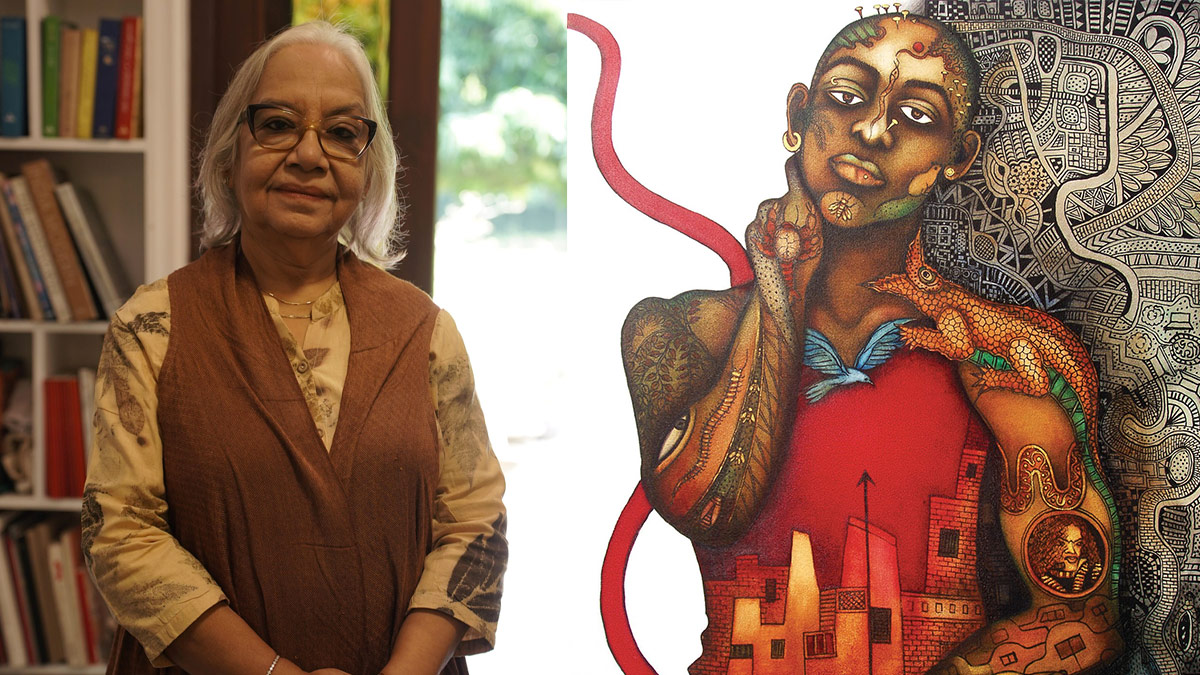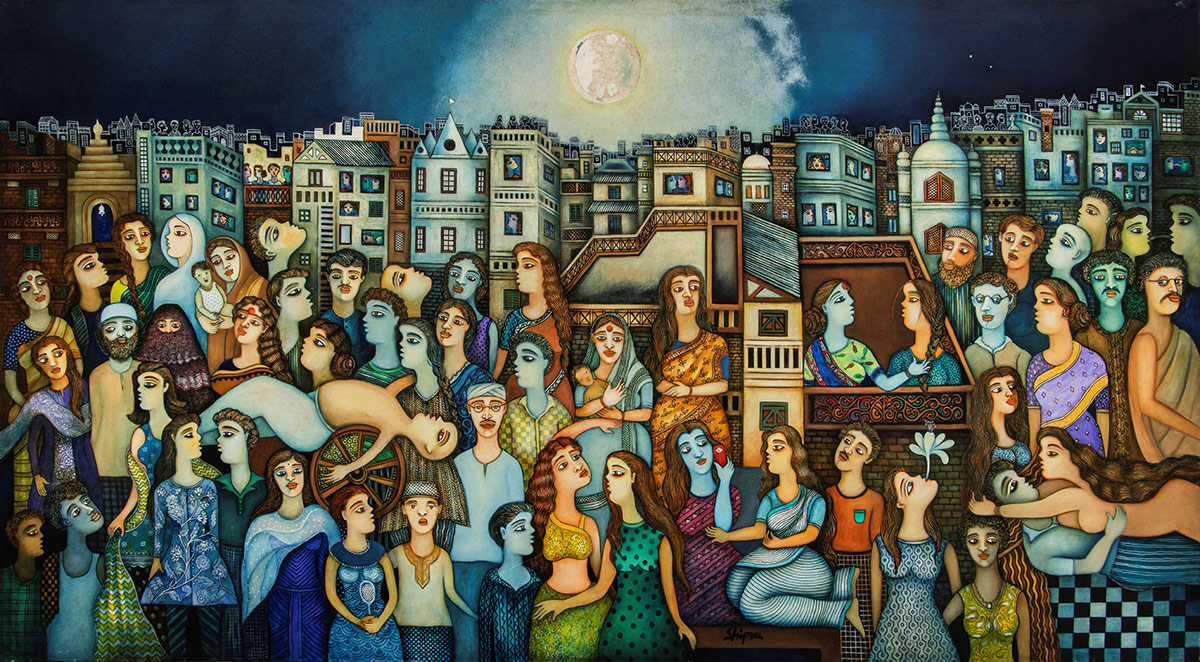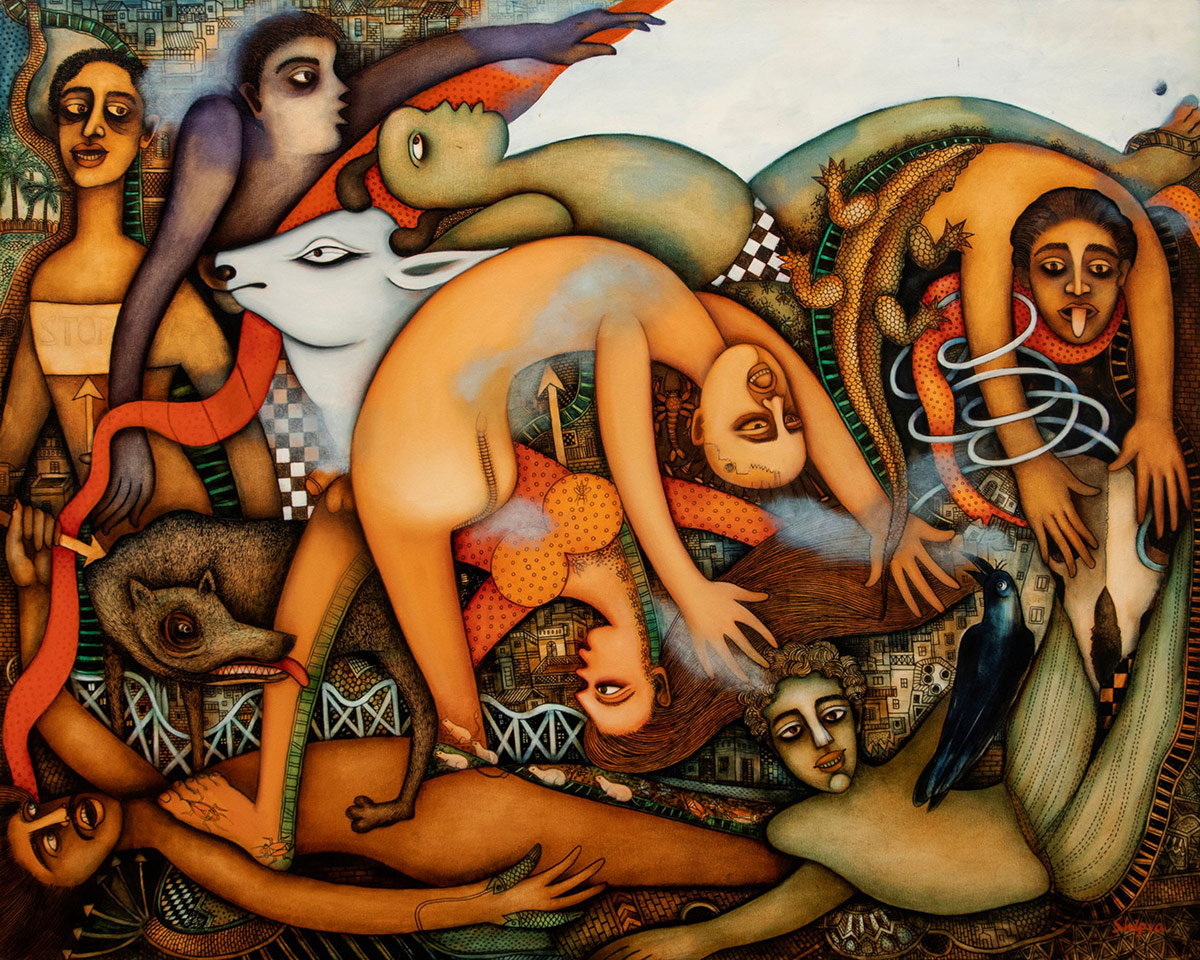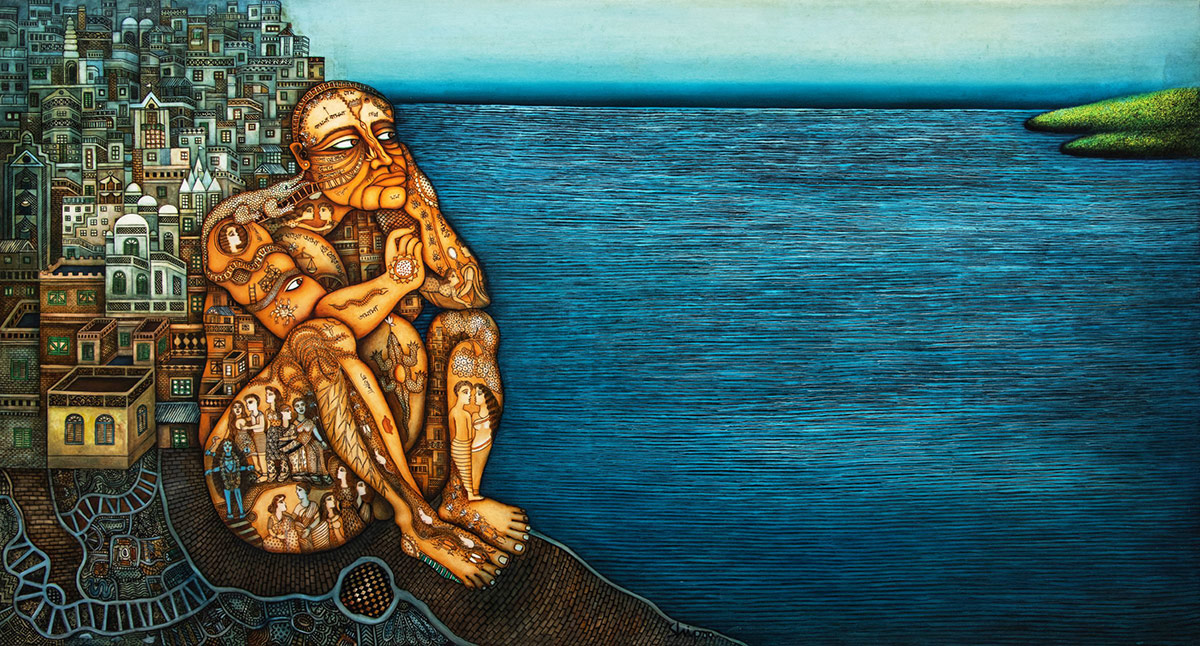
Returning to New Delhi after a decade, the landmark solo exhibition, “In Bloom: A Journey through the Five Decades of Shipra Bhattacharya,” curated by Jonaki Bhattacharya, offers an essential encounter with one of India’s most compelling and influential contemporary artists. In Bloom, on view at CCA, Bikaner House from 15 to 23 November 2025, arrives as both a homecoming and a reckoning. The exhibition meticulously taps Shipra’s commitment to figuration, a radical choice through which she has expressed emotional depth, creative freedom, and moral clarity across 50 years of artistic pursuit. The exhibition features nearly 80 works ranging from portraits, sculptures, drawings, large canvases, collages, and her distinctive tattoo-inspired pieces.
The Evolution of The Artist

Shipra Bhattacharya’s art began with an urge to express a self-taught foundation that was augmented at Kolkata’s Government College of Art and Craft and the College of Visual Arts. This sense of autonomy paved the path for her to develop her style, which is noted by bold yet soft colours and seamless brushwork. Interestingly, the figure of a solitary woman on a terrace is a frequently occurring element of her paintings throughout her career. The terrace thus becomes an element of psychic ledge rather than a mere architectural element. This recurring motif represents the imaginative freedom within the constraints of everyday life. As the artist herself notes, “Each work carries traces of silence and song, rupture and resilience… I’ve always believed that the quiet spaces within us hold immense power, not as an escape, but as a way of seeing the world more truthfully.”
The Artworks

The nature of introspection embedded in her paintings is actually a vital form of witnessing. The exhibition highlights the metamorphosis of her artworks from personal narratives to confronting collective trauma. Works such as Taposhi, an instinctive response to the Singur tragedy, and War, a commentary on global conflict, reveal the artist’s moral stand and resistance. The inclusion of abstracts like War (2014) and Stop War (2014) signifies a bold shift where the collective suffering is dissipated via fragmented representations.

Her more recent paintings, such as Floating (2023), relate to ecological sensitivity, as she depicts a duet between bloom and decay. Her domains of exploration also cover themes such as the gender matrix. One of her notable paintings, ‘He’ (2021, 2023), is surprising and intimate. She converts the male body into a vessel containing memory and tenderness. She also offers a juxtaposing view through works like She (2023) and the earlier She (2002), where a radiant feminine energy is reflected.

Her exhibitions across Germany, the UAE, the USA, and India signify the unique middle ground that she has embraced to depict the dichotomy between the traditional way of expression and contemporary political presence. She does not chase trends; she cultivates eras within herself. Also, works like Desire (2022) transform longing into a mythic river, flooding the urban subconscious, as it explores feminine identity and desire.
Exhibition Details
| Important Points | Description |
|---|---|
| Exhibition Title | In Bloom: A Journey Through the Five Decades of Shipra Bhattacharya |
| Artist | Shipra Bhattacharya |
| Curator | Jonaki Bhattacharya |
| Venue | CCA, Bikaner House, New Delhi |
| Dates & Timings | 15 – 23 November 2025 | 11:00 AM – 7:00 PM |
| Scope of Work | Spanning five decades with nearly 80 works — including portraits, drawings, sculptures, collages, and tattoo-inspired paintings. |
| Core Theme | A sustained commitment to figuration — reflecting emotional depth, imaginative freedom, and moral clarity. |
| Signature Element | The solitary woman on the terrace — a recurring symbol of imagination and quiet resilience. |
| Notable Series | ‘Desire’, ‘He’, ‘She’, ‘War’, and ‘Floating’ — exploring femininity, longing, and introspection through figuration. |
Key Highlights

- Nearly 80 works spanning portraits, large canvases, sculptures, drawings, tattoo works, and collages.
- Shipra’s signature terrace motif threads through multiple decades, forming one of the strongest iconographic links in contemporary Indian figuration.
- Works responding to collective suffering, such as Taposhi (Singur tragedy), War and Stop War (2014), present her as a witness.
- Monumental canvases like Floating (2023) and He (2021, 2023) expand her thematic spectrum into mythic, urban, and ecological terrains.
- Early influences of Kolkata’s emotional landscape recur in works like Kolkata (2016).
- A rare display of her sculptural vision, including Floating (2021–22), which translates her painted sensibility into a tactile, narrative surface.
- Curatorial framing emphasises introspection as a radical mode of perception and resistance.
Why ‘In Bloom’ Matters Now?

In Bloom offers a different kind of perspective. Shipra Bhattacharya proves that the interior world is actually a frontline, rather than a concealed space. Her focus on figuration though dignified portrayal of women, labourers, abd everyday laymen, stands against the extreme form of intellectual paintings. To her, retrospection should never be a luxury, but a moral imperative for bearing witness to both personal struggle and collective trauma. This exhibition offers a rare opportunity to appreciate the depth of an artist who has slyly built a monumental and deep corpus of work with a staunch stand and elements reflecting quality rather than quantity.
View this post on Instagram







